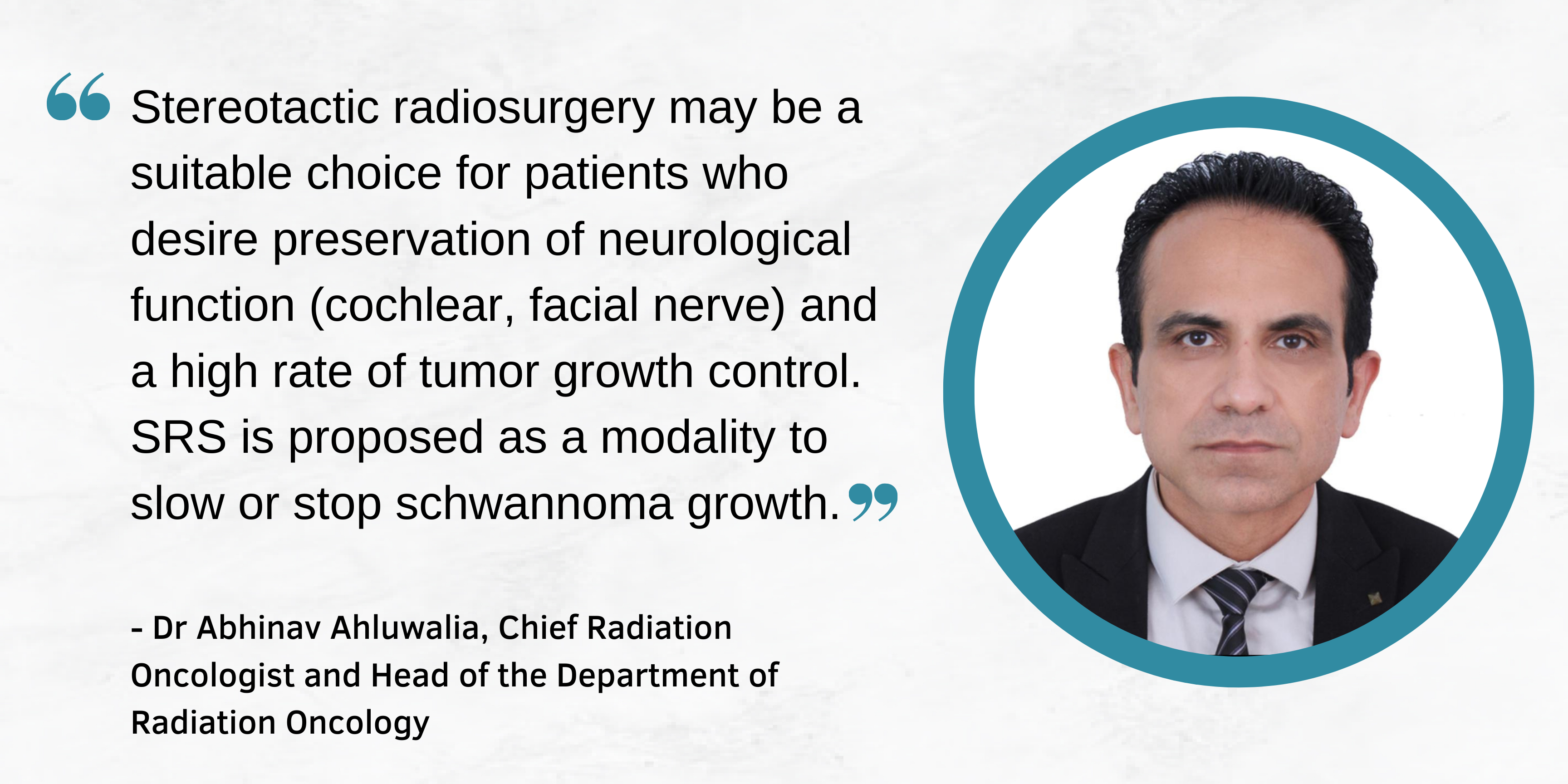Stereotactic radiosurgery (SRS) is a radiation technique that uses multiple vantage points, and imaging technology to converge a high dose of radiation on a precisely defined target volume while minimizing irradiation to surrounding tissue. SRS typically refers to the delivery of a high dose of radiation in a single session or fraction. Fractionated stereotactic radiotherapy (FSRT), may be performed to reduce the dose to adjacent critical brain or spine structures and to provide greater dose homogeneity to the target tissue. In such cases, irradiation is delivered over multiple sessions or fractions, typically at a low dose.
A LINAC- BASED SRS system uses a single radiation source rotated through multiple non-coplanar arcs to achieve the required converge on the target lesion. The systems achieve a target accuracy of 0.1 to 1mm. Benign brain tumors that can be treated by SRS include vestibular schwannomas, pituitary adenomas, meningioma, craniopharyngioma, and hemangioblastoma.
- Vestibular Schwannoma – Vestibular schwannomas (VS), also known as acoustic neuromas, are Schwann cell-derived benign tumors most commonly found in the vestibular portion of the eighth cranial nerve (CN VIII). They account for approximately 8% of intracranial tumors and 80-90% of cerebellopontine angle tumors in adults. They are generally slow-growing and are unilateral in more than 90% of cases, presenting in right and left sides equally. Progressive unilateral hearing decline is the most common symptom that leads to diagnosis of VS.


SRS is a possible first line of treatment in patients with newly diagnosed small to medium sized vestibular schwannomas, no significant brainstem compression, and reasonably well preserved hearing. SRS may be a suitable choice for patients who desire preservation of neurological function (cochlear, facial nerve) and a high rate of tumor growth control. SRS is proposed as a modality to slow or stop schwannoma growth.
- Pituitary Adenomas – Pituitary adenomas are benign tumors that arise from the cells of the anterior pituitary gland. Pituitary tumors are fairly common in the general population; First-line treatment for pituitary adenomas is typically surgery or pharmacologic treatment; however, when one of these interventions fails or there is a recurrence, radiation therapy using SRS or FSRT can be considered.
- Meningioma – Meningioma are the most frequent primary brain tumors, originating in the meninges and accounting for approximately one-third of all primary CNS tumors. Management strategies for meningioma include observation, resection, or radiation therapy. Asymptomatic patients can be managed by observation. If therapy is indicated, standard treatment is gross total surgical resection or radiation therapy. SRS/ FSRT may be first option in small meningioma presumed to be WHO grade I.
- Craniopharyngioma are rare tumors that arise from the residual epithelial cells of Rathke’s pouch. The first line of therapy for craniopharyngioma is typically surgical resection; however, aggressive surgery can be associated with complications and neurologic injury. SRS/SRT techniques have been increasingly used as a primary option for small tumors away from critical structures, as secondary treatment for residual tumor following conservative surgery, and as an option for recurrent disease.
Hemangioblastoma are rare, highly vascular tumors of the central nervous system most often found in the posterior fossa of brain. Hemangioblastoma can present as sporadic (approximately 75% of cases) or as a manifestation of von Hippel-Lindau disease (VHL). While sporadic lesions arise primarily in the cerebellum, VHL associated hemangioblastoma can arise in the cerebellum, spinal cord, and brain stem. Treatment options for hemangioblastoma include surgery and radiation therapy. Surgical resection is generally the first treatment of choice for most symptomatic hemangioblastoma; however, SRS can be an appropriate treatment option for patients with multiple tumors and with surgically i






